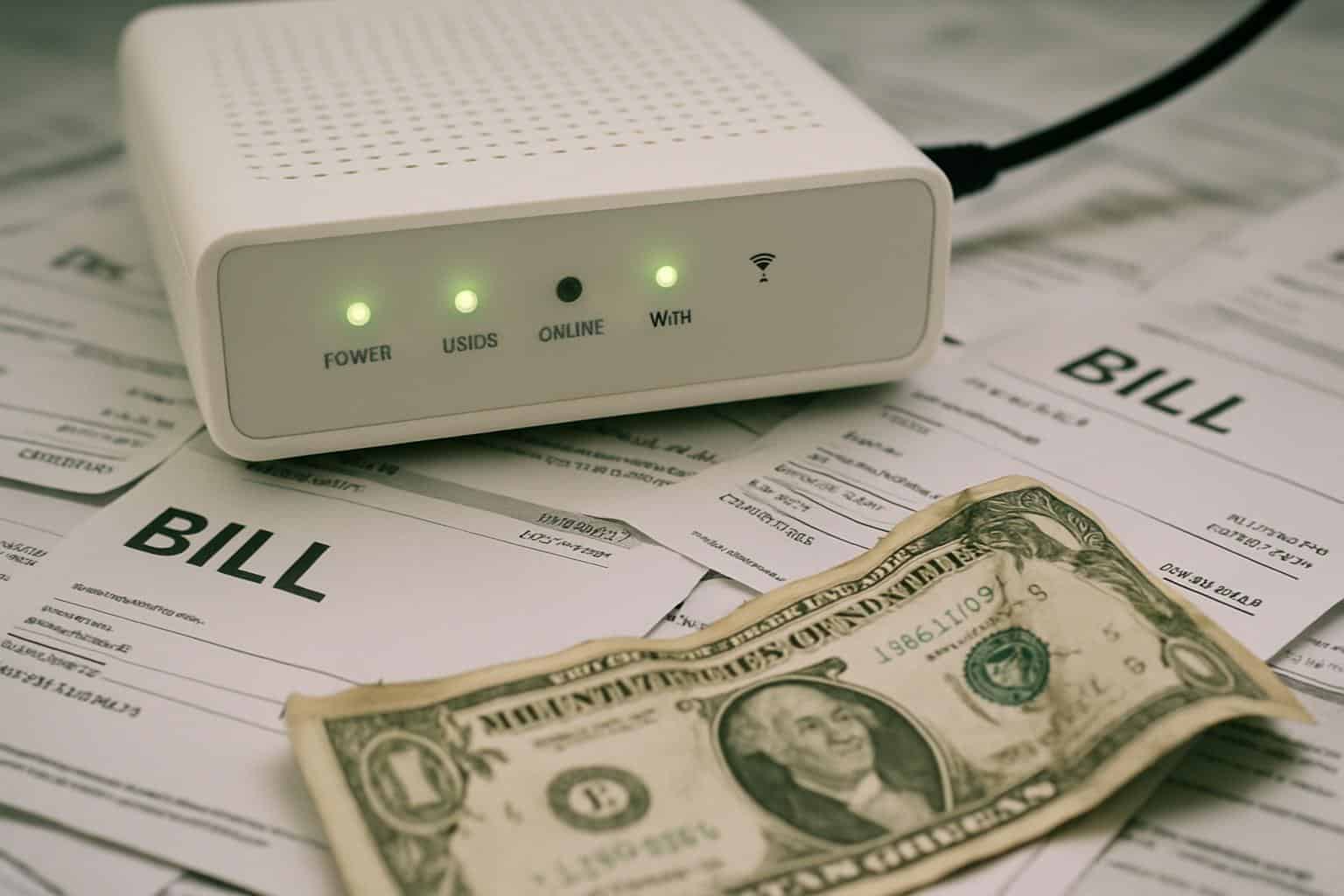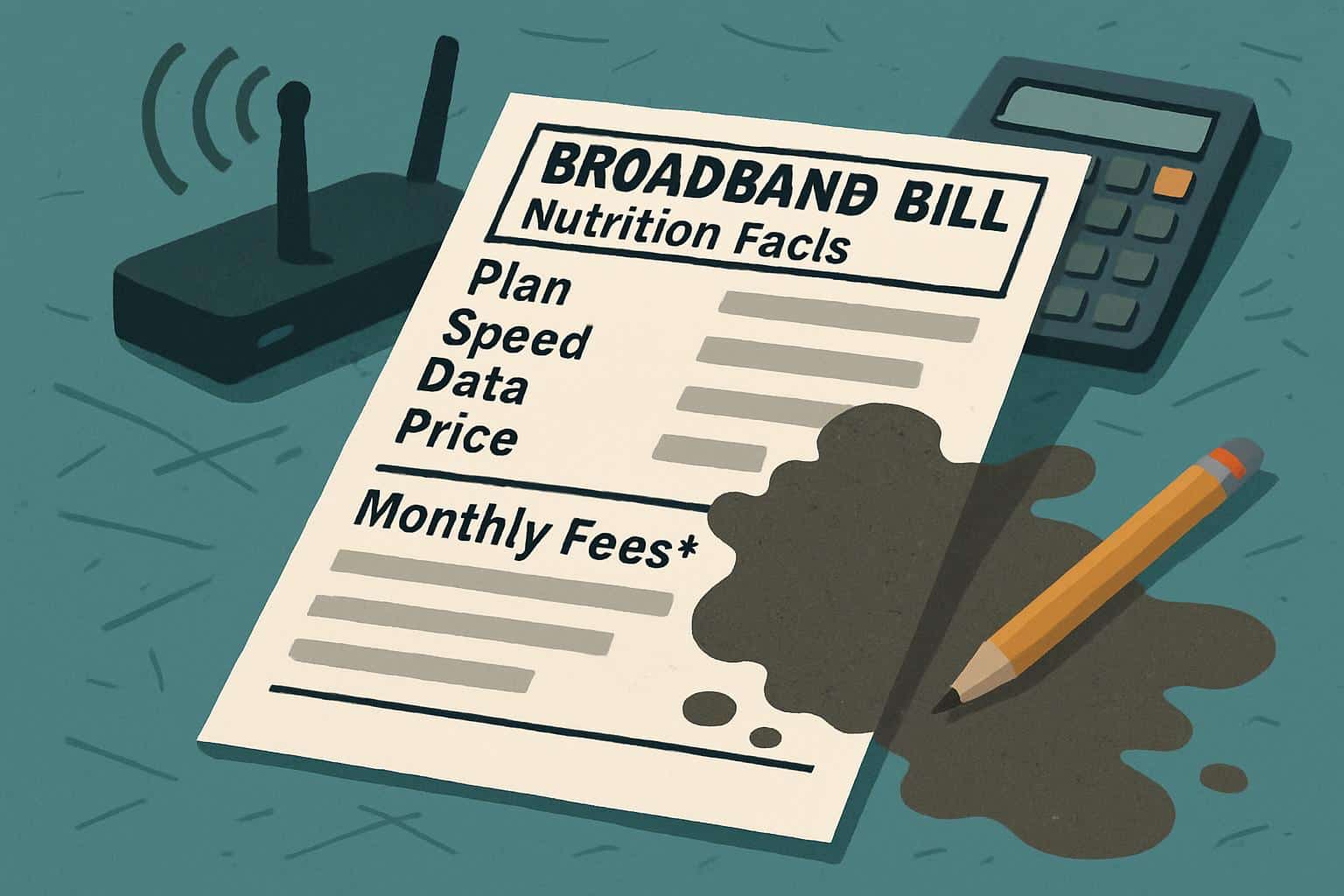Your broadband bill may soon be getting harder to read. The Federal Communications Commission is moving to strip away components of the “broadband nutrition label” initiative, a transparency program that was meant to display consumers’ true all-in price for any internet service plan before they make a purchase. Consumer advocates caution that the changes may make it harder to shop for plans and predict what you’ll actually pay each month.
What the F.C.C. Is Weighing in Its Label Rollback
What is in question? As a refresher, what’s at issue are proposed changes to several disclosure requirements. The agency is considering dropping specific listed pass-through fees by state and locality, revisiting the requirement to provide labels in multiple languages, striking the provision that requires giving customers the full label over a toll-free number, and second-guessing demands to make machine-readable versions of broadband labels.

The effort, he explained, is a clean-up of rules that generate compliance costs for providers. The labels were meant to resemble food nutrition panels in supermarkets, and list a monthly price with statistics on typical speeds and latency, data caps, promotional terms and every recurring fee that can cause an advertised price to balloon well beyond the headline figure. Relaxing these specifics risks making a clarity tool into fine print by a different name.
Why Itemized Broadband Fees Still Matter to Shoppers
These fees can include:
- State universal service fund (USF) surcharges
- 911 fees
- Right-of-way and franchise-related charges
- Provider-established line items such as a “network enhancement” charge or “regulatory recovery” fee
If the labels no longer itemize those costs, two plans that seem similarly priced could vary by $10–$20 or more when the bill comes.
Consumer Reports and other advocacy groups have detailed how “junk fees” erode comparison shopping throughout the telecom and cable industries. The Government Accountability Office has likewise concluded that consumers have difficulty comparing offers because providers do not present prices uniformly and depend heavily on promotional rates and add-ons. Solving just that problem was why clear, glossary definitions-based standard labels were introduced.
Take a typical example: a family weighing between $55 and $60 monthly plans. As itemized fees come into view, they might learn that the $55 plan includes $14 in local and provider surcharges, while the $60 plan is essentially taxed only to a rounding error. Without line items, the cheaper plan wins on paper but costs more in real life. Blowing away the fee-level detail would make that mismatch much tougher to catch.
Language Access and Phone Support Are Also in Peril
The proposal also considers restrictions on multilingual messaging as well as ending the requirement for providers to read the full label to phone customers. That’s not a minor change. Roughly one in five people in the United States speaks a language other than English at home, according to the U.S. Census Bureau’s American Community Survey; about one in 12 adults has limited proficiency in English. Labels in various languages could mean the difference between an informed decision and a costly surprise.

Phone disclosures are an accessibility safety net for those without internet access, elderly people and customers with disabilities who favor spoken explanations. Civil society organizations like Public Knowledge and the Benton Institute for Broadband & Society have made the case that weakening language and accessibility protections would harm vulnerable communities.
Data Tools Rely on Machine-Readable Labels
Another sleeper issue in the debate is whether labels ought to be machine-readable. That need enables researchers, watchdogs and price-comparison tools to ingest data at scale to bubble up total-cost differences among ISPs and regions. Relax that rule, and the wider ecosystem that helps consumers shop smarter — libraries, local governments, consumer sites — are left without a crucial set of data.
Industry Pushback and the Policy Divide
That kind of itemized list of every city- and town-specific fee is onerous and unwieldy, major trade groups for the big ISPs like USTelecom and NCTA have contended. Fees are ever-changing, they say, and harsher label rules require providers to continuously update materials. Detractors argue that complexity faced on the provider side shouldn’t result in obscurity for customers signing multi-year contracts.
Previous heads of the FCC have led calls for all-in pricing transparency, arguing that households have a right to see what something’s going to cost them upfront. The current push, however, is to cull what is seen as “chaff.” This is a policy trade-off: in exchange for simplicity for providers, are we getting an equivalent reduction of precision of consumer control?
How to Protect Yourself if the Rules Change
If the FCC relaxes its labeling requirements, consumers would have to be on their guard.
- Request the all-in monthly cost (including every tax, surcharge and equipment fee) in writing before you order.
- Specify how long promotional pricing continues, what the standard rate is, and whether the plan includes a data cap or an early termination fee.
- Save a copy of any label or quote during checkout.
For multilingual homes or those requiring phone support, ask for a translated summary or readout of all fees and terms. If the company providing your service won’t, then it’s time to shop around with competitors that have more transparent policies. Public interest groups and state utility consumer advocates also can assist in interpreting offers and escalating disputes about surprise charges.
The broadband label was designed to transform a murky market into one in which the price you see advertised is what shows up on your bill. Whether the FCC’s vote cuts through red tape or paves the way for hidden fees will affect how brazenly millions of families can shop around for an internet service plan.

